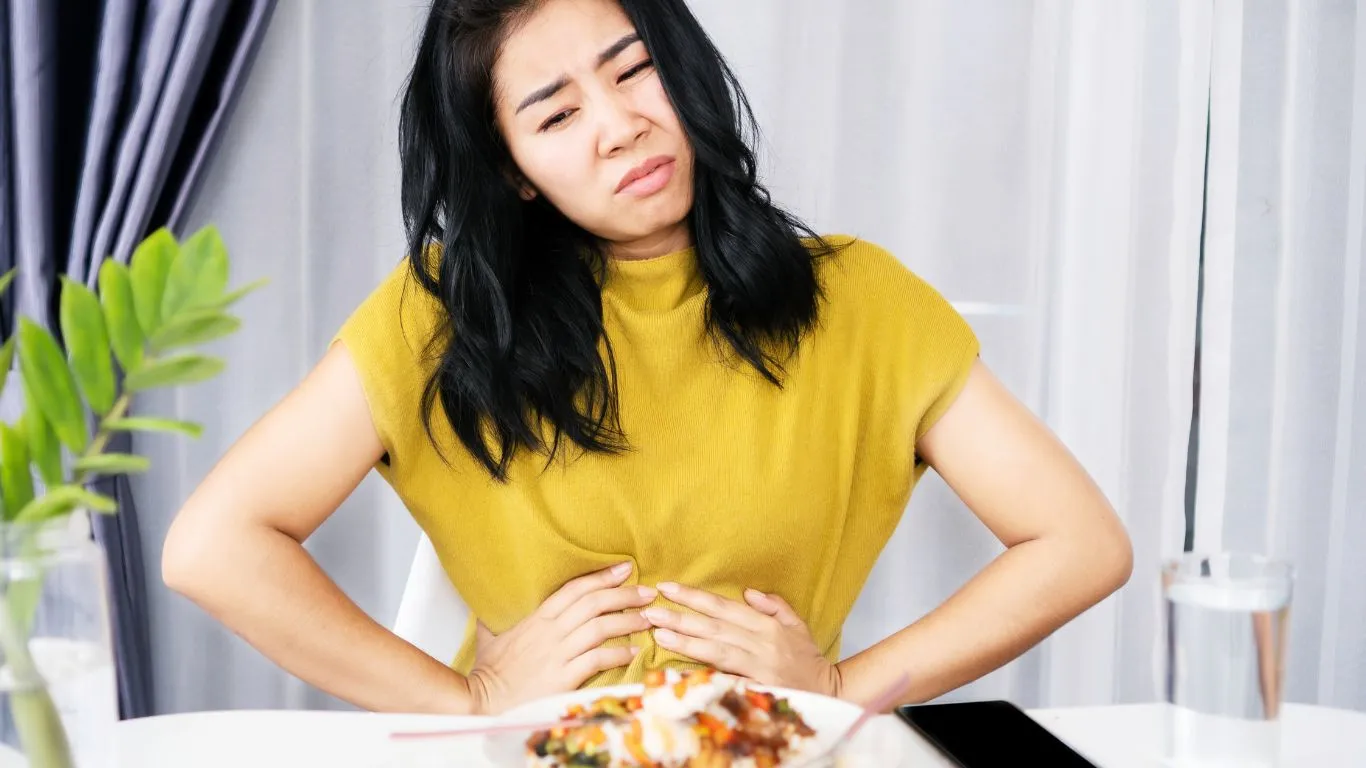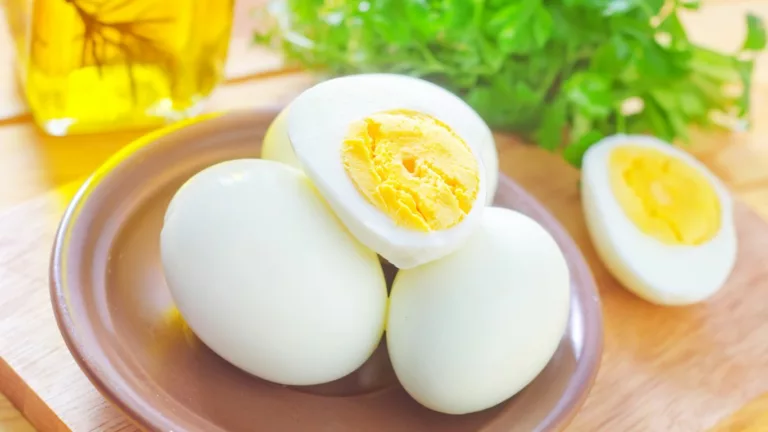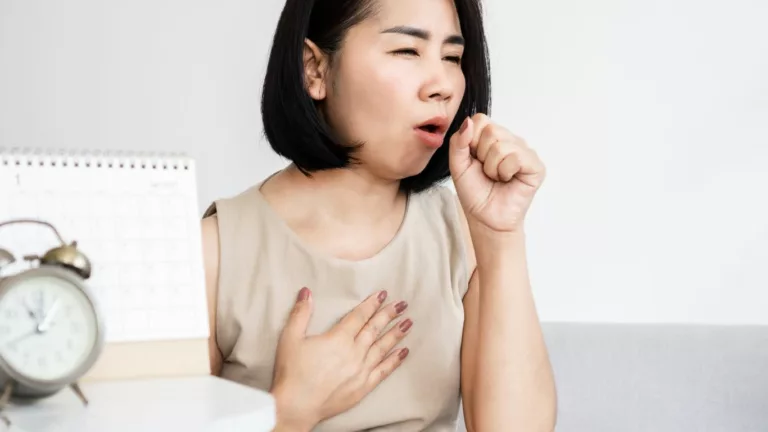GERD-Safe Dining Out Strategies: Enjoy Restaurants Without Heartburn
Dining out with GERD can feel like walking through a minefield. One wrong bite, and you’re in for a night of regret—burning chest, acid creeping up your throat, and that all-too-familiar discomfort. Trust me, I’ve been there. As someone who specializes in digestive health, I know the struggle of trying to enjoy a meal without triggering symptoms. But here’s the good news: You don’t have to give up dining out entirely. With the right GERD-safe dining out strategies, you can still savor restaurant meals without the reflux aftermath.
Why Dining Out Can Be a GERD Trigger
Before diving into the strategies, it helps to understand why restaurants can be a nightmare for GERD sufferers. Unlike home-cooked meals, restaurant food is often:
- High in fat – Fried foods, rich sauces, and butter-laden dishes relax the lower esophageal sphincter (LES), making reflux more likely.
- Loaded with hidden triggers – Many menu items contain acidic ingredients, spices, and preservatives that can set off symptoms.
- Oversized portions – Eating too much in one sitting puts pressure on your stomach, increasing the risk of acid reflux.
- Paired with carbonated and alcoholic drinks – Sodas, beer, wine, and cocktails are common culprits behind GERD flare-ups.
But don’t worry—knowing the risks is half the battle. Now, let’s talk solutions!
 Picking the Right Restaurant Matters
Picking the Right Restaurant Matters
Not all restaurants are GERD-friendly, but some are far better than others. When choosing where to eat, consider:
- Farm-to-table spots – These places focus on fresh, minimally processed ingredients, reducing the chances of hidden reflux triggers.
- Grill-based or Mediterranean restaurants – They tend to serve lean proteins, roasted veggies, and olive oil instead of heavy creams and fried foods.
- Custom-friendly restaurants – Look for places that allow substitutions so you can tweak your meal to be GERD-safe.
Avoid all-you-can-eat buffets (way too easy to overeat) and fast food joints (where grease and acidity reign supreme).
 Decoding the Menu Like a Pro
Decoding the Menu Like a Pro
Ever feel overwhelmed staring at a menu, trying to guess which dish won’t set off a GERD episode? Here’s how to navigate:
Words to Watch Out For
- “Fried,” “crispy,” “buttery,” “creamy,” – High-fat foods can weaken the LES, making reflux more likely.
- “Spicy,” “zesty,” “blackened,” – These indicate the presence of heartburn-inducing spices.
- “Marinara,” “tomato-based,” “citrus glaze,” – Acidic ingredients that can worsen symptoms.
GERD-Friendly Terms
- “Grilled,” “steamed,” “roasted,” “baked” – Cooking methods that use less fat and oil.
- “Lightly seasoned,” “herb-crusted,” “olive oil-based” – Lower chances of spicy or acidic triggers.
When in doubt, ask your server! A quick “Does this dish contain onions, garlic, or spicy seasoning?” can save you from an uncomfortable night.
 Smart Ordering Hacks
Smart Ordering Hacks
Once you’ve picked the right restaurant and spotted a GERD-friendly dish, here’s how to make it even safer:
- Customize your meal – Ask for sauces and dressings on the side, request grilled instead of fried, and opt for whole grains over white bread.
- Go easy on the portions – Overeating is a major reflux trigger. Share a meal or take half home for later.
- Mind your beverage – Skip the soda, citrus juices, and alcohol. Stick to water, herbal tea, or a mild non-caffeinated drink.
Making smart choices doesn’t mean sacrificing flavor. With a little effort, you can enjoy eating out without the fear of heartburn!
 The Art of Eating Slow and Mindful
The Art of Eating Slow and Mindful
One of the biggest mistakes I see GERD sufferers make (and I used to be guilty of this too) is eating too fast. When you’re starving and that delicious meal arrives, it’s tempting to dive in like it’s your last meal on earth. But here’s the problem—eating too quickly can overload your stomach, putting extra pressure on your lower esophageal sphincter (LES), making acid reflux much more likely.
Why Slowing Down Helps
- Gives your stomach time to signal fullness – Overeating is one of the top reflux triggers, and slowing down prevents this.
- Reduces air intake – Eating too fast means swallowing more air, which can lead to bloating and increased pressure on the LES.
- Encourages better digestion – Your stomach can only handle so much at once. Eating slowly helps food move through your system more efficiently.
GERD-Friendly Tips for Eating Mindfully
- Chew each bite thoroughly – Aim for at least 20-30 chews per bite to break down food properly.
- Put your fork down between bites – This forces you to slow your pace and savor each bite.
- Engage in conversation – Chatting with your dining companions naturally helps pace your eating.
Trust me, once you start eating mindfully, you’ll realize just how much you were rushing before. And bonus—you’ll actually enjoy your food more!
 Post-Meal Habits That Can Make or Break Your Night
Post-Meal Habits That Can Make or Break Your Night
What you do after you eat is just as important as what you eat. If you’re like most people, you probably feel tempted to recline in your chair after a satisfying meal or—worse—head straight to bed. But for those of us with GERD, bad post-meal habits can be a recipe for disaster.
What Not to Do After Eating
- Don’t lie down immediately – Gravity is your best friend when it comes to keeping stomach acid where it belongs. Lying down too soon lets acid creep up your esophagus.
- Avoid tight clothing – High-waisted pants or snug belts can squeeze your stomach, increasing reflux risk.
- Skip the post-meal espresso – Caffeine relaxes the LES and stimulates acid production. If you need a warm drink, try chamomile tea instead.
GERD-Safe Post-Meal Rituals
- Take a light stroll – A short 10-15 minute walk aids digestion and helps keep acid down.
- Stay upright for at least 2-3 hours – If you must sit, opt for a chair with good posture support.
- Drink a soothing beverage – Warm water or a mild herbal tea can help ease digestion.
I can’t tell you how many times I used to sabotage myself by flopping onto the couch after a meal. Once I started staying upright and walking a little, my post-dinner reflux dramatically improved.
Handling Unexpected Triggers at Restaurants
Even with the best planning, surprises happen. Maybe your salad arrives with a tangy dressing you weren’t expecting, or your “mild” dish turns out to have a hidden spicy kick. What now?
Quick Fixes When You’ve Been Exposed to a Trigger
- Drink water (but not too much) – A few sips can help wash down an irritant, but gulping large amounts can worsen symptoms.
- Chew gum – Preferably non-mint, since mint can relax the LES. Gum increases saliva production, which helps neutralize acid.
- Ask for a side of plain rice or bread – These can help absorb excess acid if your meal was spicier or richer than expected.
When to Call It a Night
Sometimes, despite your best efforts, GERD symptoms might still flare up. If you feel discomfort setting in, listen to your body. Skip dessert, opt for a mild herbal tea, and start planning an early exit so you can properly recover at home.
Dining out with GERD isn’t always easy, but it’s absolutely doable with the right strategies. In the next section, we’ll dive deeper into specific GERD-friendly cuisines and how to navigate different types of restaurants without worry.
 Case Studies & Real-Life Examples
Case Studies & Real-Life Examples
Let’s get real—managing GERD while dining out isn’t just about theory; it’s about finding what works for real people. Over the years, I’ve worked with countless individuals struggling with acid reflux, and I’ve seen firsthand how small changes can lead to major improvements.
Sarah’s Story: Finding Confidence in Ordering
Sarah, a 34-year-old teacher, used to avoid restaurants altogether because she was afraid of triggering her GERD symptoms. She’d had too many nights ruined by surprise ingredients and rich meals. But after learning to ask the right questions and request simple modifications—like swapping out creamy dressings for olive oil and vinegar—she gained the confidence to dine out without worry.
Mark’s Experience: Portion Control is a Game Changer
Mark, a 45-year-old dad, always struggled with portion sizes at restaurants. He would eat whatever was on his plate (because, well, that’s how he was raised), only to suffer from terrible reflux later. His fix? Splitting meals with his wife or boxing up half his meal before even taking the first bite. This simple strategy reduced his symptoms dramatically.
Emma’s Trick: The 15-Minute Rule
Emma, a 29-year-old fitness coach, discovered that taking a 15-minute post-meal walk prevented late-night acid reflux episodes. Instead of heading straight to the car, she strolls around the restaurant or nearby park. This slight adjustment has saved her from many sleepless, heartburn-filled nights.
These are just a few examples, but the takeaway is clear—small changes lead to big relief when dining out with GERD.
Key Takeaways: What You Need to Remember
Let’s do a quick recap of the most important GERD-safe dining out strategies we’ve covered:
- Choose the right restaurant – Go for places that offer fresh, minimally processed foods and customization options.
- Be smart when ordering – Avoid fried, spicy, acidic, and heavy foods. Opt for grilled, baked, or steamed options.
- Eat slowly and mindfully – Chew thoroughly, pace yourself, and enjoy the dining experience.
- Stay upright after meals – No lying down immediately! Take a light walk instead.
- Know your backup plan – If a meal unexpectedly triggers symptoms, drink water, chew gum, and avoid large portions of irritants.
Dining out doesn’t have to be stressful. A little planning and awareness can help you enjoy meals with friends and family without the painful aftermath.
FAQs
What are the best types of restaurants for GERD?
Mediterranean, Japanese, and farm-to-table restaurants tend to be the most GERD-friendly. They focus on fresh ingredients and lean proteins without excessive spices or heavy sauces.
Can I ever eat spicy food again?
It depends on your personal tolerance. Some people can handle mild spice, while others react to even a sprinkle of black pepper. If you’re craving spice, start with small amounts and monitor your symptoms.
What’s the best drink to order at a restaurant?
Water is always a safe choice, but if you want something with flavor, herbal teas (like chamomile or ginger) can be good alternatives. Avoid carbonated, caffeinated, and alcoholic drinks.
Is it okay to have dessert?
Many desserts contain chocolate, citrus, or heavy creams, which are common GERD triggers. If you want a treat, opt for something mild, like vanilla ice cream, a small fruit-based dish (without citrus), or a plain biscotti.
Bonus: Additional Resources & DIY Tips
Want more guidance on managing GERD? Check out these resources:
- National Center for Biotechnology Information (NCBI) – GERD Research
- Mayo Clinic – GERD Diet Tips
- WebMD – Heartburn & Acid Reflux Management
And here’s a GERD-friendly DIY tip: Keep a food journal. Tracking what you eat and how your body responds can help you pinpoint your specific triggers and create a custom dining-out strategy.
Appendix: References & Disclaimer
This article is based on my professional experience as a GERD specialist, alongside research from reputable medical sources. However, always consult with your doctor or a registered dietitian for personalized advice.
References:
Final Thoughts & Call to Action
Living with GERD doesn’t mean giving up on dining out. With a little knowledge and the right strategies, you can still enjoy eating at restaurants without suffering later.
Have you found any GERD-friendly dining strategies that work for you? Share your experiences in the comments below or reach out on social media—I’d love to hear your tips!

Camellia Wulansari is a dedicated Medical Assistant at a local clinic and a passionate health writer at Healthusias.com. With years of hands-on experience in patient care and a deep interest in preventive medicine, she bridges the gap between clinical knowledge and accessible health information. Camellia specializes in writing about digestive health, chronic conditions like GERD and hypertension, respiratory issues, and autoimmune diseases, aiming to empower readers with practical, easy-to-understand insights. When she’s not assisting patients or writing, you’ll find her enjoying quiet mornings with coffee and a medical journal in hand—or jamming to her favorite metal band, Lamb of God.

 Picking the Right Restaurant Matters
Picking the Right Restaurant Matters Decoding the Menu Like a Pro
Decoding the Menu Like a Pro Smart Ordering Hacks
Smart Ordering Hacks The Art of Eating Slow and Mindful
The Art of Eating Slow and Mindful Post-Meal Habits That Can Make or Break Your Night
Post-Meal Habits That Can Make or Break Your Night




